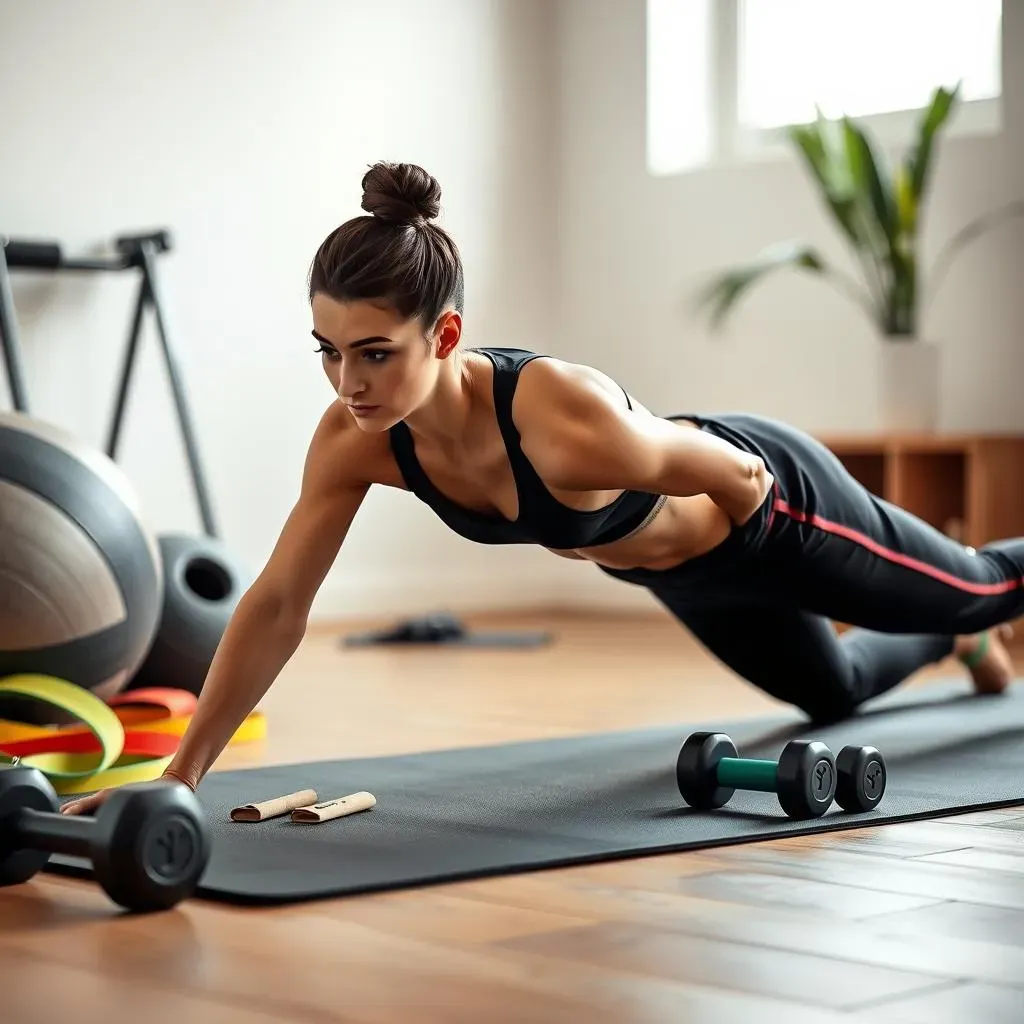Table of Contents
Ever feel like your middle is a bit...meh? You're not alone. A strong core isn't just about having washboard abs; it's the powerhouse for everything you do, from picking up groceries to nailing that tricky yoga pose. But let's be real, hitting the gym isn't always an option. That's where having the right home workout equipment for core comes in. This article is your guide to navigating the world of at-home core training. We’ll break down what your core actually *is*, look at the top equipment picks for 2024, and give you the lowdown on what to consider before buying. Forget endless crunches – we're talking about effective, efficient ways to build real core strength. We'll also tackle some common questions, so you'll be armed with the knowledge you need to start your journey to a stronger, more stable you. So, ready to ditch the wobbly feeling and build a core that can handle anything? Let's get started.
What Exactly Is Your Core Anyway?
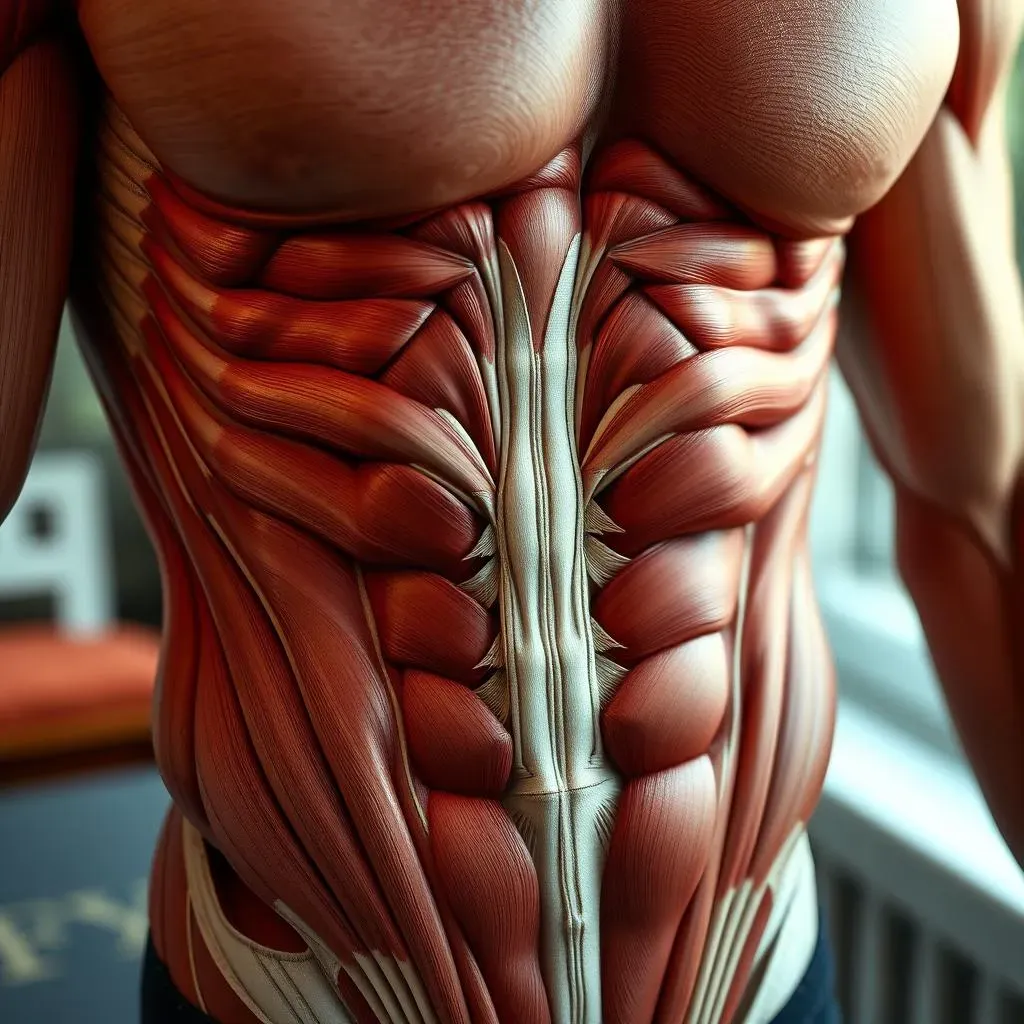
What Exactly Is Your Core Anyway?
Beyond the Six-Pack
When most people think "core," they picture a six-pack, right? But here's the thing: your core is way more than just those surface muscles. It's actually a complex network of muscles that wrap around your entire midsection, like a super strong, internal corset. We're talking about the rectus abdominis (those six-pack muscles), the obliques (on your sides), the transverse abdominis (deep inside), and even the muscles in your back. It's basically everything that connects your upper and lower body.
Think of your core as the foundation of a house. If the foundation is weak, the whole house is shaky. Similarly, a weak core impacts everything from your posture to your balance and even your ability to perform everyday tasks. So, while chasing that six-pack might be a fun goal, remember that true core strength comes from engaging and strengthening all of these muscles, not just the ones you can see in the mirror.
Muscle Group | Location | Function |
|---|---|---|
Rectus Abdominis | Front of the abdomen | Flexes the spine, helps with posture |
Obliques | Sides of the abdomen | Rotates and bends the torso |
Transverse Abdominis | Deep within the abdomen | Stabilizes the spine and pelvis |
Back Muscles | Along the spine | Supports the spine, allows for extension |
Why It Matters
Now, why should you care about all of this? Well, a strong core is the key to unlocking better movement, improved balance, and a reduced risk of injury. Whether you're a weekend warrior, a desk jockey, or just someone who wants to feel better in their body, core strength is crucial. It's not just about looking good, it's about feeling good and being able to move with ease and confidence.
Plus, let's be honest, who doesn't want to be able to lift heavy things without throwing their back out? A strong core helps to transfer force efficiently, reducing strain on your spine and other joints. And for all you athletes out there, a solid core is the secret to generating power in your movements, whether you're swinging a bat, running a race, or just trying to keep up with your kids.
The Best Home Workout Equipment for Core Strength
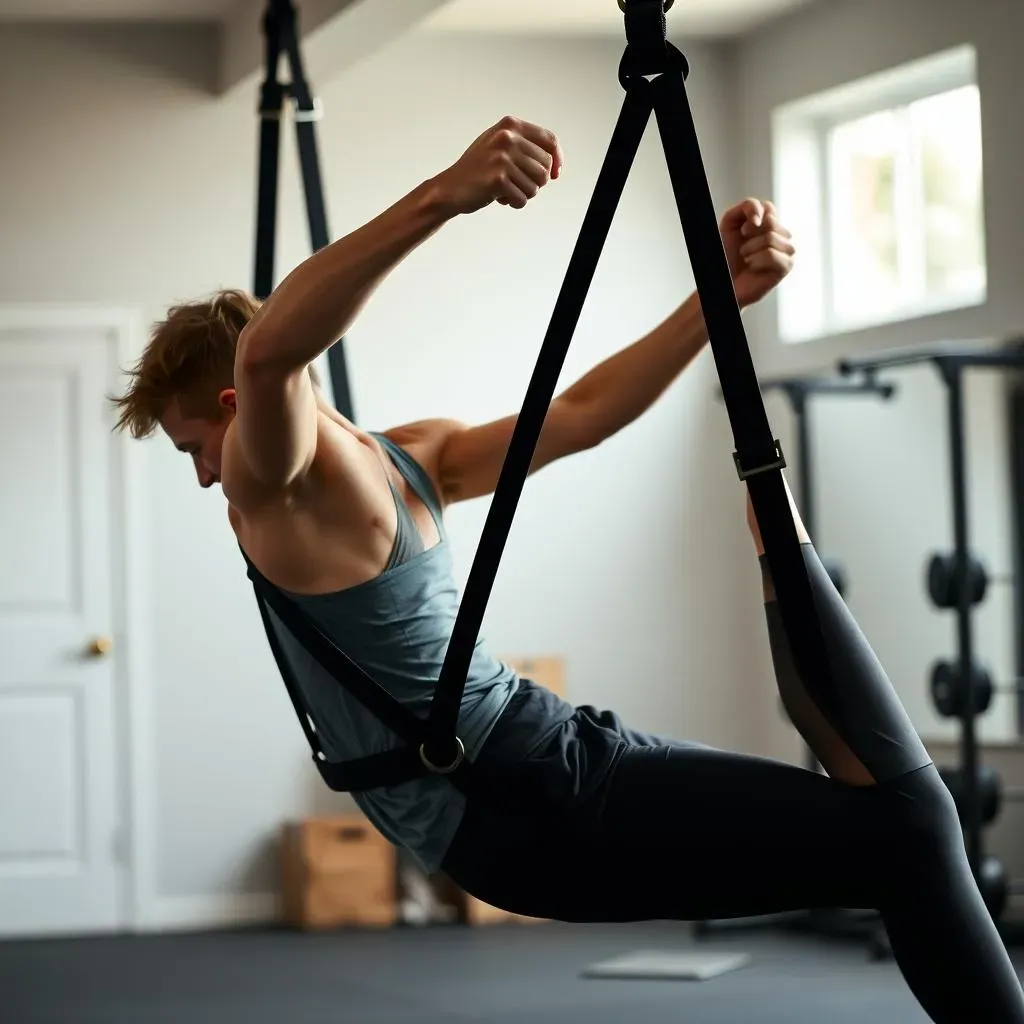
The Best Home Workout Equipment for Core Strength
TRX Suspension Trainer: Your Portable Gym
Okay, so you're ready to level up your core game, but you don't want a huge, clunky machine taking over your living room. I get it. That's where the TRX Suspension Trainer comes in. This isn't your grandpa's workout gear; it's a system of straps that uses your own body weight as resistance. It's like having a portable gym that you can set up anywhere—your door, a tree, even a sturdy pole. The beauty of the TRX is that it works your core constantly, because you're always fighting to stabilize yourself. Every move, from planks to rows, becomes a core exercise. Trust me, you'll feel muscles you didn't even know you had.
I remember when I first tried the TRX, I thought, "How hard can this be?" Famous last words, right? I was sore for days, but in a good way. It really showed me how much my core was slacking. The instability forces your core to work overtime, making even simple exercises way more effective. Plus, it’s super versatile – you can adjust the straps to target different muscle groups, making it a great investment for a full-body workout, not just your core.
REP Fitness Ab Roller: Small But Mighty
Next up, we've got the REP Fitness Ab Roller. Now, this little wheel might look innocent, but don't let its size fool you. It's a powerhouse for blasting your abs and building serious core strength. The ab roller forces you to engage your entire core to control the movement, creating a killer workout. It's a simple piece of equipment, but it requires a lot of control and stability, which is exactly what you want for a solid core. It's also super affordable and doesn't take up much space, so it's perfect for a home gym setup.
When I started using an ab roller, I could barely get a few inches out before collapsing into a heap. It was humbling, but it pushed me to build real core strength. The key is to start slow and focus on proper form. Don't try to roll out too far at first – just focus on maintaining a straight line from your head to your knees. You'll be surprised how quickly you'll progress. And trust me, the feeling of accomplishment after a solid ab roller session is pretty sweet.
Equipment | Why It's Great for Core | Space Needed | Price |
|---|---|---|---|
TRX Suspension Trainer | Engages core with every move, versatile, portable | Minimal, just need anchor point | Mid-range |
REP Fitness Ab Roller | Intense ab workout, affordable, compact | Very small | Low |
Concept2 RowErg: Full Body Core Workout
Last but certainly not least, let’s talk about the Concept2 RowErg. Now, I know what you might be thinking - a rowing machine for core? Seriously? But hear me out. While it’s true that the RowErg gives you a fantastic cardio workout, it’s also a sneaky amazing tool for building core strength. Every stroke on the RowErg engages your entire body, with a big emphasis on your core muscles. You're not just pulling with your arms; you're using your core to stabilize and power the movement. It's a full-body workout that will leave your abs burning.
I used to think of rowing as just an arm workout, until I realized how much my core was working to keep my body stable and my posture correct. The RowErg is also great because it's low-impact, so it's gentle on your joints. And it’s not just about strength; it also improves your cardiovascular health. It might be a bigger investment and take up more space than the other options, but if you're looking for a comprehensive workout that engages your entire body, including your core, the RowErg is a fantastic choice.
Other Home Core Exercise Equipment We Looked At
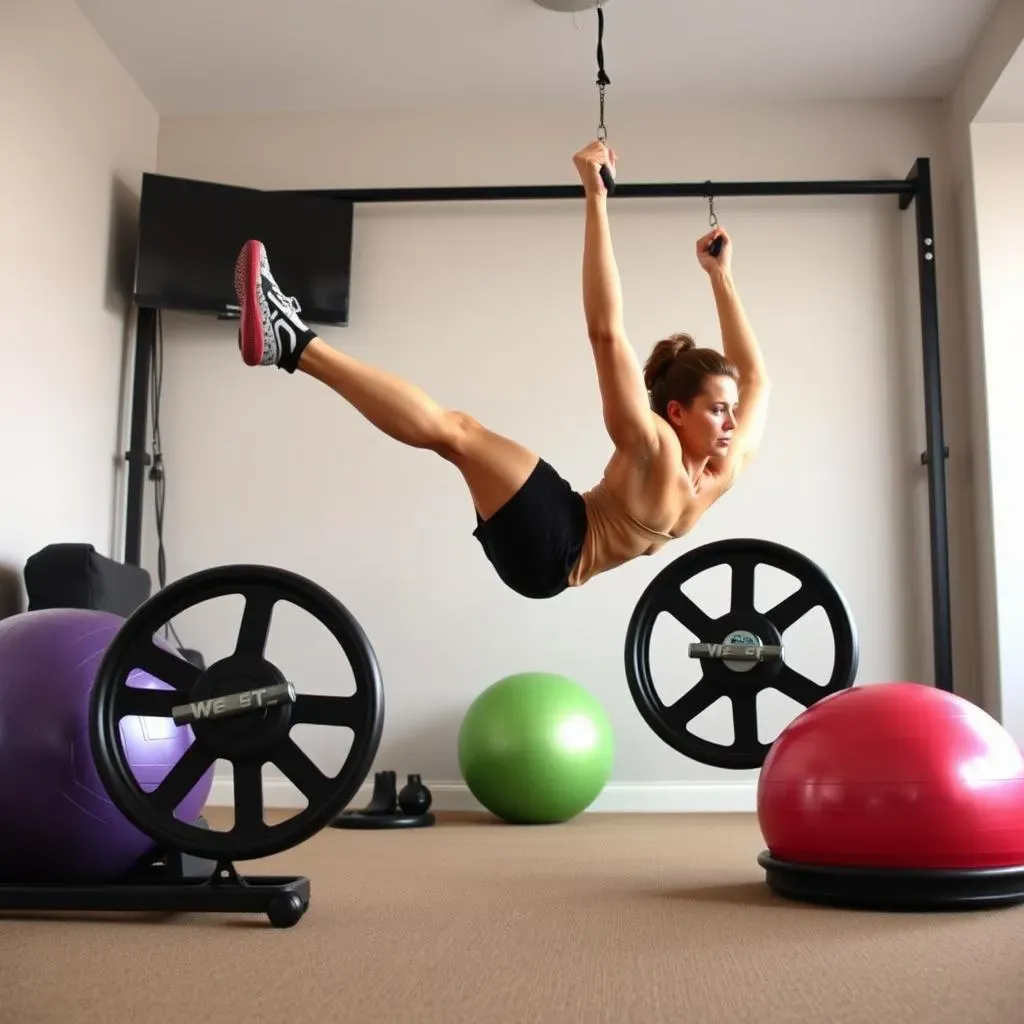
Other Home Core Exercise Equipment We Looked At
Ab Wheels: A Mixed Bag
Okay, so we've talked about some of the heavy hitters, but there's a whole world of other core equipment out there. Let's start with ab wheels. Now, these are different from the REP Fitness Ab Roller we talked about earlier. Ab wheels are usually wider and have two wheels instead of one. Some people swear by them, claiming they're the ultimate ab shredder. They definitely can be challenging, and they do engage your core. However, I found that they're not as effective as the REP Fitness Ab Roller for a couple of reasons. The wider base can make it easier to cheat by relying on your arms and shoulders instead of your core, and I also found it harder to maintain proper form, which could lead to injury if you're not careful.
Plus, I've seen way too many people using ab wheels incorrectly, arching their backs and not engaging their core at all. It's like they're just rolling forward and hoping for the best. If you're considering an ab wheel, my advice is to start slow and focus on maintaining a straight line from your head to your knees, just like with the ab roller. But honestly, for the most effective and safest core workout, I'd stick with the REP Fitness Ab Roller.
Stability Balls: More Than Just Sitting
Next up, let's talk about stability balls. These big, bouncy spheres are often seen in gyms and offices, and they definitely have their place in core training. The idea behind a stability ball is that it forces your core to work harder to keep you balanced. Sitting on one instead of a chair can help engage your core muscles, and doing exercises on a stability ball can be a great way to add an extra challenge. However, I've noticed that a lot of people tend to use stability balls as a comfy seat rather than an active training tool. They end up slouching, which defeats the whole purpose.
I've tried using stability balls for core exercises, and while they can be effective, I find they can be a bit awkward and unstable, which can make it difficult to focus on proper form. Plus, they take up a lot of space, and honestly, they're not the most convenient piece of equipment to move around. If you already have a stability ball, great, use it. But if you're specifically looking for the best core workout equipment for home, I’d say there are better options that are more targeted and efficient.
Equipment | Pros | Cons |
|---|---|---|
Ab Wheels | Can be challenging, engages core muscles | Easy to cheat, can be hard to maintain proper form |
Stability Balls | Engages core, improves balance | Takes up space, can be awkward, not very targeted |
Ab Stimulators: Skip the Gimmicks
Finally, let’s talk about ab stimulators. These are those devices that promise to give you ripped abs without you having to lift a finger. They send electrical pulses to your muscles, causing them to contract. Sounds too good to be true? Well, that's because it is. While these devices might cause your muscles to twitch, they don't actually do anything to build strength or burn fat. In my opinion, they’re a complete waste of money. You're much better off putting in the work with actual exercises and equipment that challenge your core. Don’t fall for the gimmicks; there are no shortcuts to a strong core.
I've seen people use these things religiously, and they haven't gotten any closer to their core goals. It’s all about proper exercise and diet. Don’t waste your money on gadgets that promise results without effort; focus on consistency and good habits, you will have better results. Save your money and invest it in equipment that will genuinely help you reach your fitness goals.
How We Picked and Tested the Best Home Workout Equipment for Core
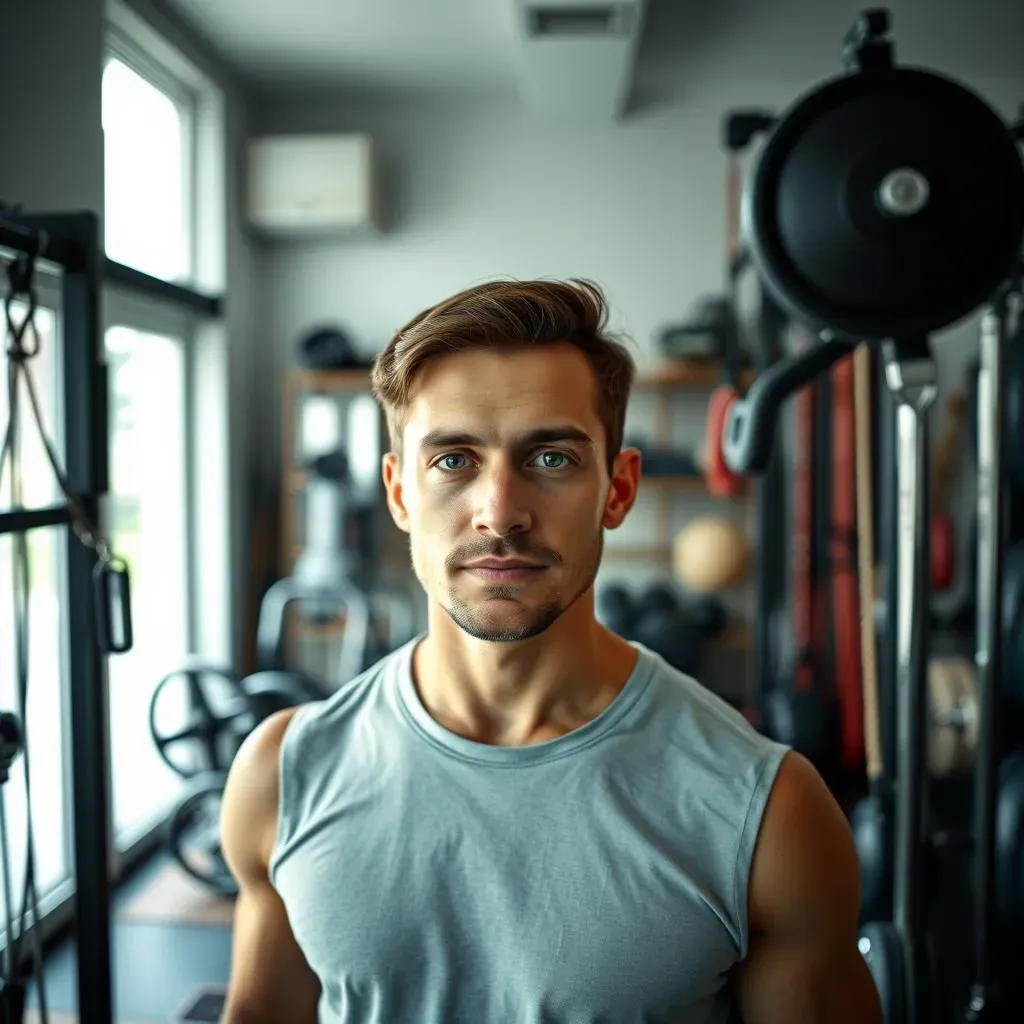
How We Picked and Tested the Best Home Workout Equipment for Core
Alright, so you're probably wondering how we narrowed down the sea of core equipment to the few we've recommended. It wasn't just a random pick, I promise! We started by looking at what people actually use and what fitness experts recommend. Then, we got our hands on the most promising pieces of gear and put them through a series of tests. I'm talking real sweat, real struggles, and real results. We weren't just looking for something that looked good; we wanted equipment that was effective, durable, and user-friendly. We considered how easy it was to set up, how much space it took up, and of course, how well it actually worked your core. It was a pretty intense process, but hey, that's what it takes to give you the best recommendations.
We also made sure to include equipment that would work for a range of fitness levels. Whether you're a complete beginner or a seasoned athlete, we wanted to make sure there was something on the list for you. We also looked at the price point of each piece of equipment, because not everyone has a ton of cash to drop on workout gear. We wanted to recommend equipment that would give you the best bang for your buck. It wasn't just about the workout, it was about considering all the aspects that affect how you use and enjoy the equipment.
Criteria | Description |
|---|---|
Effectiveness | How well the equipment works the core muscles. |
Durability | How long the equipment lasts and holds up to use. |
User-Friendliness | How easy the equipment is to set up and use. |
Space | How much space the equipment takes up in a home gym. |
Price | The cost of the equipment, considering value for money. |
Why Bother? The Benefits of Core Exercise Equipment
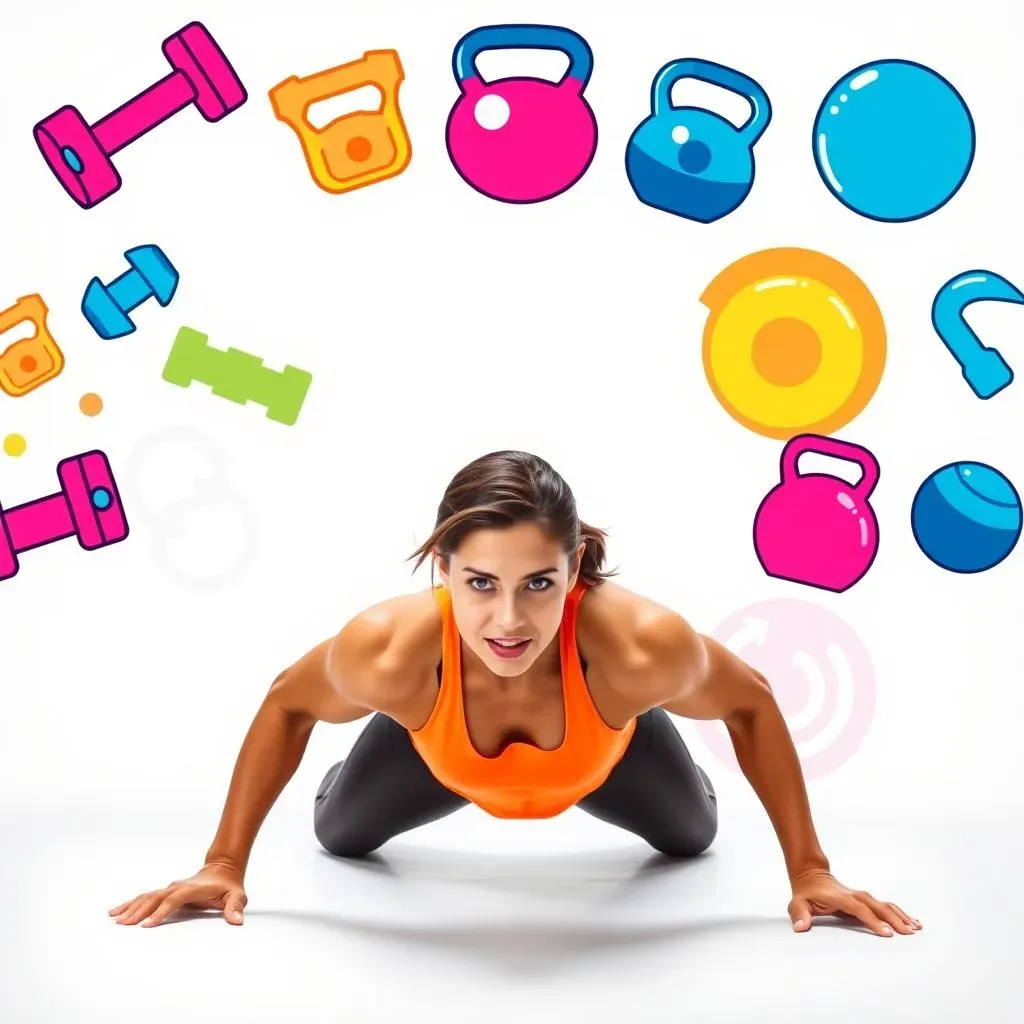
Why Bother? The Benefits of Core Exercise Equipment
Okay, so we've talked about the gear, but why should you even bother with core exercise equipment in the first place? Well, let me tell you, it's not just about looking good in a swimsuit. A strong core is like the command center for your entire body. It impacts everything from your posture and balance to your ability to move efficiently and avoid injuries. Think of it as the foundation upon which all other movements are built. When your core is strong, your body is more stable, which allows you to perform daily activities and athletic feats with greater ease and power. It also helps protect your spine from unnecessary strain, which can lead to chronic back pain.
I used to think core strength was just for athletes, but I’ve learned that everyone can benefit from a strong core. Whether you're carrying groceries, chasing after your kids, or spending hours at a desk, your core is working hard to keep you upright and moving. When you neglect your core, you’re setting yourself up for imbalances, injuries, and a whole lot of discomfort. So, investing in core strength isn’t just about aesthetics; it’s about improving your overall quality of life. It’s about having the strength and stability to do the things you love without being held back by pain or weakness.
And let's be real, who doesn't want to feel more confident and capable? A strong core not only helps with physical performance but also with your mental well-being. When you feel strong and stable, you're more likely to feel confident and in control of your body. Plus, a good core workout can be a great stress reliever, leaving you feeling energized and accomplished. It’s kind of like building a superpower from the inside out. So, if you’re looking for a way to improve your overall health and well-being, focusing on your core is a great place to start.
Think of your core as the unsung hero of your body. It's always working, even when you don't realize it. Strengthening your core is like giving that hero a much-needed upgrade. It’s not just about those six-pack muscles; it’s about building a solid foundation that will support you in everything you do. So, if you're ready to feel stronger, more stable, and more confident, then it's time to start paying attention to your core and the equipment that can help you get there.
Benefit | Description |
|---|---|
Improved Posture | A strong core helps you maintain an upright posture, reducing slouching and back pain. |
Enhanced Balance | A stable core improves your balance and coordination, reducing the risk of falls. |
Reduced Back Pain | A strong core supports your spine, alleviating strain and chronic back pain. |
Increased Athletic Performance | A powerful core allows you to generate more force and move more efficiently in sports and other activities. |
Improved Quality of Life | A strong core makes everyday tasks easier and more comfortable. |
What to Look for When Buying Home Workout Equipment for Core
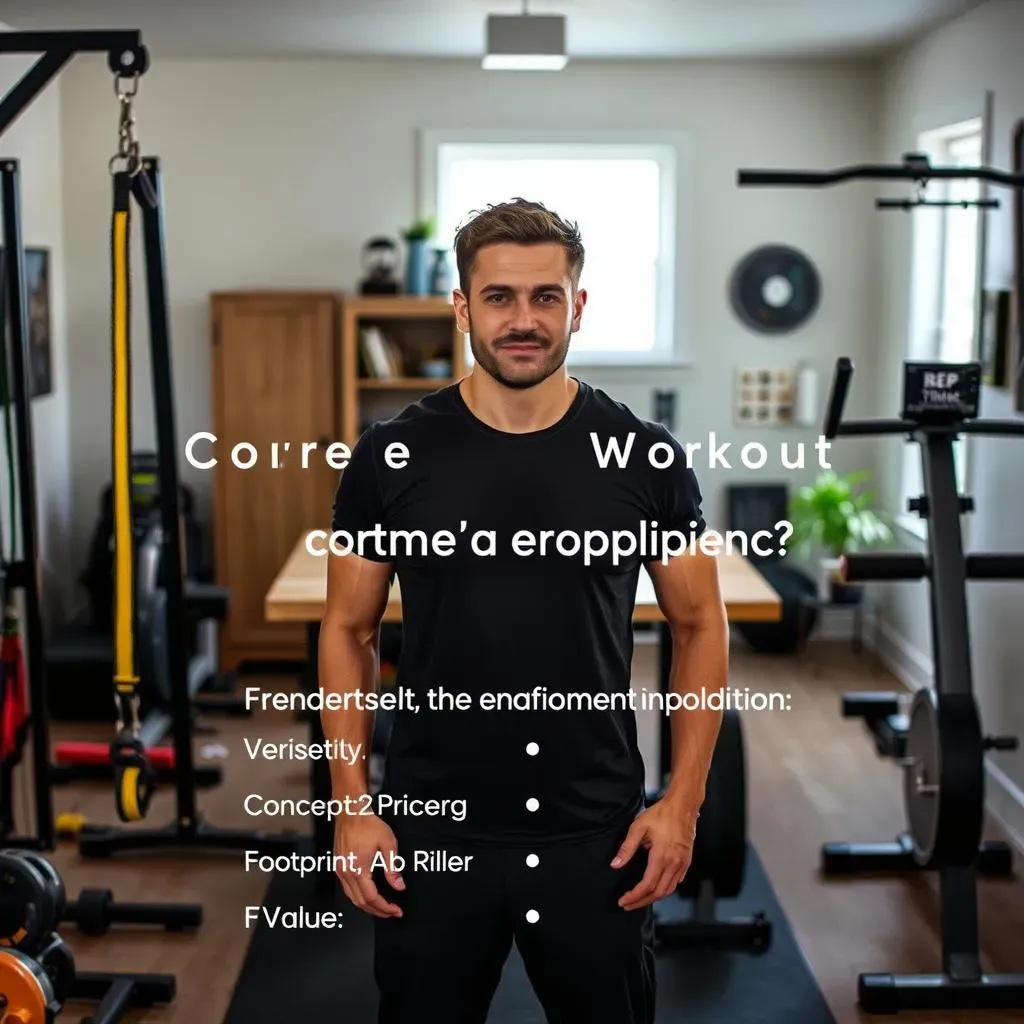
What to Look for When Buying Home Workout Equipment for Core
Okay, so you're ready to invest in some home workout equipment for core, but where do you even start? It's easy to get overwhelmed by all the options, but don't worry, I've got your back, or should I say, your core. The first thing you need to think about is versatility. You want equipment that can do more than just one thing, right? The TRX Suspension Trainer, for example, isn't just for your core; it can work your entire body. The same goes for the Concept2 RowErg. You want to get the most bang for your buck, so think about how many different exercises you can do with each piece of equipment. After all, you don't want a gadget that's going to collect dust in the corner after a few weeks.
Next, you've got to consider the price. Let's face it, not everyone has a limitless budget for workout gear. It's important to be realistic about what you can afford and to choose equipment that gives you the best value. The REP Fitness Ab Roller is a great example of an affordable option that delivers big results. But remember, the cheapest option isn't always the best. Sometimes it's worth spending a little more for quality equipment that will last longer and provide a better workout. You also need to think about the footprint of your equipment. Do you have a dedicated home gym, or are you working out in your living room? If space is limited, you'll want to choose compact equipment that's easy to store away when not in use. The TRX and the ab roller are great for small spaces, while the RowErg will require a bit more room.
Factor | Description |
|---|---|
Versatility | How many different exercises can be done with the equipment? |
Price | What is the cost of the equipment? Does it offer good value? |
Footprint | How much space does the equipment take up? |
Value | Does the equipment justify its price with its functionality and durability? |
Finally, think about your fitness level and goals. Are you a beginner just starting out, or are you an experienced athlete looking for a new challenge? Some pieces of equipment, like the ab roller, can be very challenging and may not be suitable for beginners. If you're new to core training, it's best to start with something more gentle and work your way up. Also consider what you want to achieve. Are you looking to build strength, improve stability, or just get a flatter stomach? Choose equipment that aligns with your specific goals. It’s not about getting the most expensive or fancy gear, it’s about finding what works best for you and your body. So, take some time to think about what you need, what you can afford, and what you enjoy, and you’ll be well on your way to a stronger core.
Remember, the best equipment is the one that you'll actually use. It doesn't matter how amazing a piece of gear is if it's just going to sit in the corner gathering dust. So choose something that you're excited to use and that you can easily incorporate into your routine. Don’t feel pressured to buy the most expensive or trending product. Focus on what will help you achieve your goals in a way that’s fun and sustainable. After all, consistency is key to any fitness journey, so find equipment that will keep you motivated and engaged. Now, let’s get to those frequently asked questions!
Home Workout Equipment for Core: FAQs
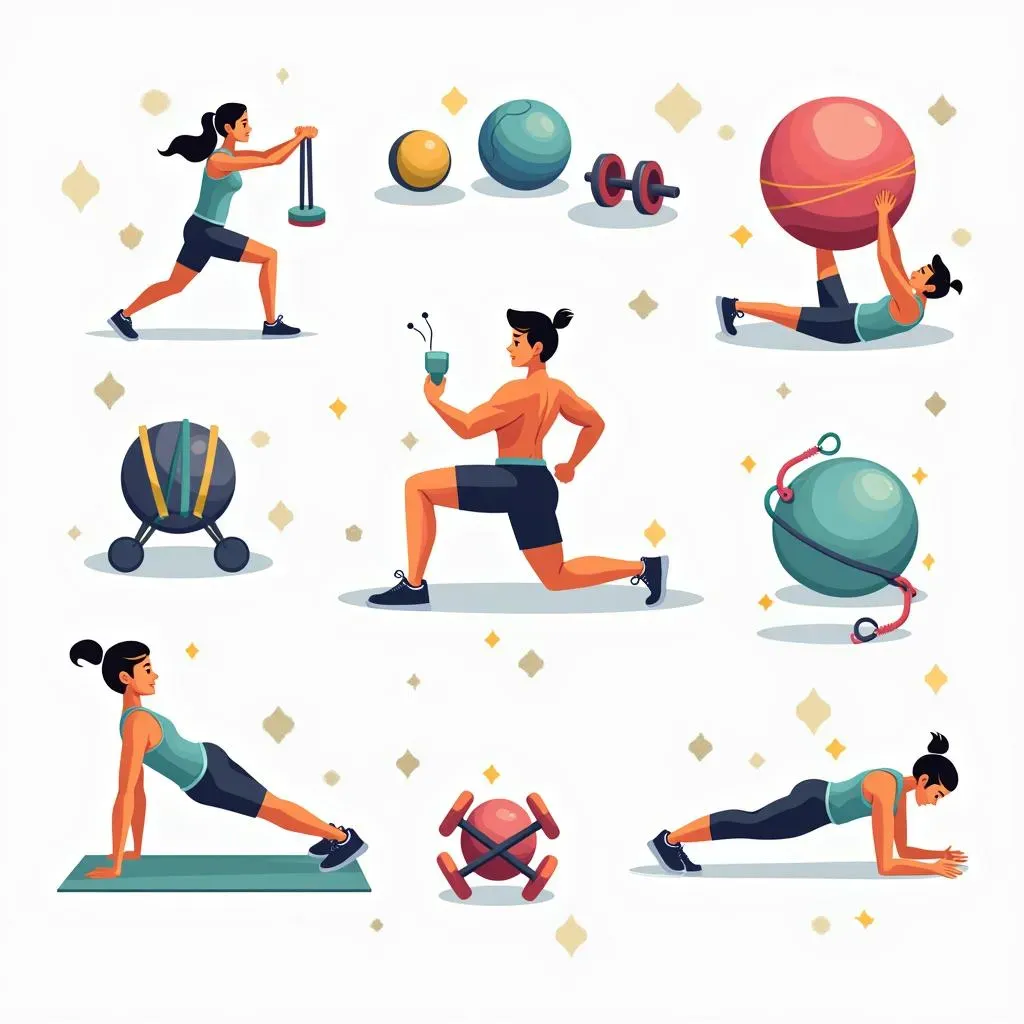
Home Workout Equipment for Core: FAQs
Can I Really Work My Core Every Day?
Okay, so you’re super motivated and ready to hit your core hard, but is it okay to work it every single day? Well, the short answer is: it depends. Your core muscles, just like any other muscle group, need time to recover. If you’re doing intense core workouts every day, you might be setting yourself up for overtraining and fatigue. That being said, light core work, like gentle planks or bird dogs, can be done daily without any issues. The key is to listen to your body and give it rest when it needs it. If you're feeling sore or tired, it's a sign that you need to dial back the intensity or take a break.
I’ve definitely fallen into the trap of overdoing it, thinking more is always better. But trust me, your body will let you know when it’s had enough. It's all about finding the right balance between pushing yourself and allowing your muscles to recover. Think of it like this: you wouldn't run a marathon every day, right? The same principle applies to your core. You need to give it time to rebuild and get stronger. So, while daily core work can be beneficial, make sure you're not pushing yourself too hard and always prioritize rest and recovery.
Are Core Machines Worth It?
Now, let’s talk about core machines. You know, those contraptions you see at the gym that promise to give you rock-hard abs? The truth is, some core machines are effective, while others are a complete waste of time. For example, ab stimulators, those gadgets that send electrical pulses to your muscles, are generally not worth the hype. They might make your muscles twitch, but they don't actually build strength or burn fat. On the other hand, some machines, like cable machines or leg press machines, can be used for effective core exercises. The key is to choose machines that allow you to engage your core muscles properly and to maintain good form.
I've seen people use core machines religiously, hoping for a quick fix. But the reality is, there are no shortcuts to a strong core. It's all about consistent effort, proper form, and a well-rounded workout routine. So, instead of relying solely on machines, focus on exercises that engage multiple muscle groups at once, like planks, rows, and squats. These exercises not only work your core but also improve your overall strength and stability. And remember, the best core workout is the one you'll actually do consistently, so choose exercises that you enjoy and that fit into your lifestyle.
Question | Answer |
|---|---|
Can I work my core every day? | Light core work can be done daily; avoid intense daily workouts to prevent overtraining. |
Are core machines worth it? | Some machines are effective, but avoid gimmicks like ab stimulators; focus on compound exercises. |
What's the Best Exercise Machine for My Core?
Okay, so you're wondering which exercise machine is the absolute best for your core? Well, the truth is, it really depends on your fitness level and your specific goals. If you're a beginner, you might want to start with something simple like bodyweight exercises or a stability ball. As you get stronger, you can progress to more challenging equipment like the REP Fitness Ab Roller or the TRX Suspension Trainer. If you're looking for a full-body workout that also engages your core, the Concept2 RowErg is an excellent choice. The best machine for you is the one that you enjoy using and that you can incorporate into your routine consistently.
I’ve found that the most effective way to build core strength is to use a variety of exercises and equipment. Don't get stuck doing the same old thing every time you work out. Challenge your body in different ways, and you'll see better results. Also, remember that consistency is more important than intensity. It’s better to do a short, effective workout a few times a week than to do a long, grueling workout once in a blue moon. So, experiment with different equipment, find what you enjoy, and make it a regular part of your fitness routine. You will be surprised what you can achieve with consistency and determination.
How Often Should I Do Core Exercises?
So, how often should you actually be doing core exercises? The sweet spot seems to be around 2-3 times a week, with a day of rest in between each session. This gives your muscles enough time to recover and rebuild, which is crucial for building strength. Now, this doesn't mean you can't do any core work on your off days. You can still do some light core engagement exercises, like planks or bird dogs, but avoid going too hard. Remember, it's all about finding a balance that works for you and your body. It's not about pushing yourself to the limit every single time; it's about being consistent and listening to your body.
I used to think that I had to work my core every day to see results, but I learned the hard way that rest is just as important as exercise. When you don't give your body enough time to recover, you're more likely to get injured and you're less likely to see the progress you want. So, make sure you're incorporating rest days into your routine. It's not about being lazy; it's about being smart. And remember, consistency is the key to success. So, find a workout schedule that works for you and stick with it. You’ll be amazed at how quickly your core will get stronger and more stable.
Question | Answer |
|---|---|
What's the best exercise machine for my core? | It depends on your fitness level and goals; experiment with different options. |
How often should I do core exercises? | 2-3 times a week, with rest days in between, is generally recommended. |
